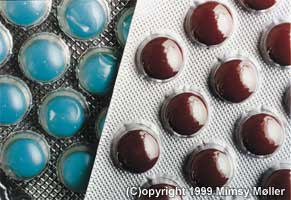Anti-doping Work in Norway
Historical archive
Published under: Stoltenberg's 1st Government
Publisher: Kulturdepartementet
Short version of the Norwegian Action Plan, October 1999
Guidelines/brochures | Date: 12/04/2000
Action PlanAnti-doping Work in NorwayShort version of the Norweigan Action Plan, October 1999 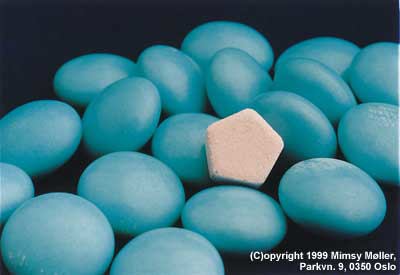 ContentsForeword1 Introduction2 Use of doping agents as a social problem3 Legislation4 Production and distribution system5 Preventative and attitude-shaping work among children and young people6 Research needs in the area7 Measures8 ReferencesForewordIn the summer of 1994 the Ministry of Cultural Affairs took the initiative towards arranging a meeting between the Ministry of Health and Social Affairs, the Ministry of Defence, Headquarters Defence Command Norway, the Norwegian Board of Health, the Norwegian Confederation of Sport and the Ministry of Cultural Affairs on the growing use of doping agents outside organised sport. The meeting resulted in the establishment of an informal contact committee drawing representatives from organised sport and the authorities in question. The committee was to co-ordinate anti-doping work among the affected parties. Alongside the above-mentioned institutions the informal contact committee comprised the Ministry of Children and Family Affairs, the Ministry of Finance and Customs, the Norwegian College of Physical Education and Sport, and Aker University Hospital. At question time in the Storting on 10 January 1996 the Minister of health was asked what steps he would take to enable the non-sporting world to benefit from the expertise which organised sport had accumulated in the drive against doping. In his reply the health minister stated his intention, in conjunction with the cultural affairs minister, to put the informal contact committee on a formal footing and to ask the committee to present an action plan setting forth measures which could be implemented in relation to milieus outside organised sport. The Ministry of Health asked the Ministry of Cultural Affairs to assume responsibility for the committee and to take the initiatives necessary to move it forward. The cultural affairs minister duly appointed the formal Contact Committee on 24 November 1997. The Contact Committee includes one representative from each of the following institutions: Aker University Hospital, the Ministry of Children and Family Affairs, the Ministry of Defence, Headquarters Defence Command Norway, the Ministry of Justice, the Ministry of Education, Research and Church Affairs, the Norwegian Olympic Committee and Confederation of Sport, the Norwegian College of Physical Education and Sport, Oslo Police District, the Directorate of Customs and Excise, the Ministry of Health and Social Affairs, the Norwegian Board of Health and the Ministry of Cultural Affairs. The Contact Committee is headed by the Ministry of Cultural Affairs, which has also acted as secretariat. The action plan describes the background for the anti-doping effort and measures to be taken in areas where the Contact Committee considers action to reduce the use of doping agents to be particularly urgent .  1 IntroductionBackground to the action planThe problems associated with doping have traditionally been regarded as belonging to the world of organised sport. Doping agents and methods are used by athletes to enhance performance in the quest for sporting and financial success. This has naturally left its mark on the anti-doping effort. So far most of the work done in the field of anti-doping in Norway has been under the auspices of the Norwegian Olympic Committee and Confederation of Sport (Norwegian acronym: NIF). In recent years, however, doping has also been a growing problem in the non-sporting world. The use of doping agents outside organised sport can primarily be explained in terms of a desire to “improve” bodily appearance. Use of doping agents and anti-doping work in a historical perspectiveThe term "dope" has its origin in South Africa where it was a strong beverage used to increase physical and mental endurance. Doping is an ancient phenomenon with a firm footing in most cultures. People in various epochs have known about and searched for substances able to influence physical performance in various contexts whether this be war, work, sexual activity or partying. There are few good definitions of doping. Many attempts have been made to define the term, but none is entirely satisfactory. In Norway the NIF gives the following definition of doping:
A closer definition is difficult. Indeed no uniform definition currently exists. The great majority of international and national sports organisations and authorities employ lists of banned agents and methods. Doping has been a familiar problem in the world of sport for a long time. Systematic use of stimulants arose in certain sports in the mid-1950s, and generalised use of pharmaceutical agents for doping purposes in organised sport gathered momentum in the 1960s. There are many indications that the use of doping agents has increased between the 1960s and the present. Anti-doping activity has a far shorter history than doping itself. Several tragic doping-related fatalities occurred in the period to the mid-1960s. As a result of this and of the widespread use of doping agents in certain sports, a meeting of the Council of Europe was held in January 1963. This resulted in the first definition of doping. The International Olympic Committee (IOC) adopted the Council of Europe’s definition the following year during the 1964 summer games. In Norway the anti-doping effort started at the beginning of the 1970s. A statement in 1971 by the NIF’s supreme body, the Sports Assembly, came out against the use of stimulants to enhance performance. At the Sports Assembly in 1973 this statement was adopted as part of “NIF's programme for the 70s”. The doping issue was studied and reviewed in the period 1973-76 and proposals for action were presented to the Sports Assembly in 1976. In May 1976 the Sports Assembly resolved to screen Norwegian athletes for anabolic steroids. The NIF started doping controls in selected federations, and in 1978 extended them to all federations affiliated to the NIF. In 1980 the controls were extended to agents and methods included in the IOC’s doping list at any given time. For controls to be as effective as possible it was considered important to conduct tests unannounced and out of competition. Work on establishing a Norwegian doping laboratory started in 1985, and the Section for Doping Analysis at the Hormone Laboratory, Aker University Hospital, was accredited by the IOC as Norway’s doping laboratory in 1988. Challenges in the fieldThe NIF's anti-doping campaign has been justified in terms of a need for fair competition and to safeguard athletes' health. The doping list serves to protect athletes against ambitious, irresponsible coaches and managers, as well as against sports doctors and others who are tempted into medical irresponsibility. Traditionally the doping issue has been linked to a national need for self-assertion and athletes' need to perform well and to improve records. The commercialisation of sport and athletes' pursuit of prestige mean they may be more likely than previously to opt for a "slightly simpler way" to achieve their goals. Recent surveys indicate that the use of doping agents outside organised sport is on the increase. This may mean that the non-sporting world is the arena where the biggest challenges are faced. Report to the Storting No. 16 for 1996-97 entitled "Drugs Policy" ( Om narkotikapolitikken) cites police reports that users are getting ever younger, and that multiple drug use has become common in some youth milieus. Organised sport, financially assisted by the State, has assumed a responsibility for keeping its own house in order. Outside organised sport no-one is assuming such a responsibility. Outside organised sport the motive for drug use is not primarily to improve performance. Most users do not participate in competitive sports. Physical appearance and physical culture are important elements. Cultivating the body to look attractive is all-important. Doping agents are an aid to achieving a cosmetic goal. In other contexts doping agents are used to develop physical strength and aggressive behaviour. The use of doping agents outside organised sport is often closely linked to strength training, body-building and body fixation. The problems such use entails must be defined both within a health and a crime perspective. Based on indications of growing use of doping agents outside organised sport, there is a need to ascertain the prevalence of doping agent use, the consequences of such use and what measures are currently in place to combat the problem. There is also a need to co-ordinate this activity and to initiate new measures to combat the use of doping agents in the community. 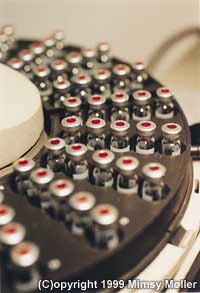 2 Use of doping agents as a social problemDoping agents are used and peddled clandestinely, making the volumes involved difficult to quantify. Information on prevalence is gained primarily from surveys and control activity. Research designed to estimate the prevalence of doping agent use is mainly based on questionnaire surveys and results of drug tests. In Norway surveys among a selection of sports federations show that about 1.3% of athletes have taken doping agents. Similar surveys in Norwegian private fitness centres show that about 2% of people using such gymnasia have taken doping agents. According to surveys among children and young people, 1-2% have used doping agents. Similar surveys in Sweden and North America report a higher percentage in the same age groups. Available surveys are presented in Table 1. Controls based on suspected use of doping agents show a positive test share of about 1% in organised sport. Similar controls at a selection of fitness centres have produced a figure of about 20%. According to a survey carried out by the National Defence, about 1.4% of military personnel use doping agents. This is comparable with figures from surveys conducted among young people in the population at large. Trends which may lead to increased use of doping agentsTwo explanatory models state in broad terms the cause of doping agent use: In organised sport the use of doping agents is primarily linked to a desire to achieve better results. In the non-sporting world there is much to suggest that doping agents are regarded as an aid to improving one's physical appearance. Performance cultureThe traditional explanation for the use of doping agents cites organised sport's focus on improved performance and victory, i.e. "faster - higher - stronger". Doping in organised sport has roots going back to the 19th century. The methods used have evolved in step with progress in medical research to include anabolic steroids, growth hormones, erythropoietin, etc. A recent survey by the Norwegian College of Physical Education and Sport shows that the best Norwegian athletes (687 men and 565 women) appear to be clearly opposed to the use of doping agents, based both on fair-play and health rationale. Only seven respondents reported experiencing strong or moderate pressure to use doping agents, while the majority cite an effective control programme, harsh penalties and fear of the severe consequences of a positive test as important reasons for not using doping agents. Table 1: Results from various studies of prevalence of doping use
Physical cultureHowever, there is much to suggest that doping is currently more prevalent outside the world of organised sport, particularly in certain fitness centres and body-building circles. Those involved are either not participating in organised sports at all, or are body-builders organised outside the NIF. Aspects of modern physical culture are often cited as an explanation for the doping problem in these circles. In this context doping-agent use is related to identity formation. In doping-tainted circles body shape and size are an important marker in an identity construct. The use of doping agents in these circles is not just about designing or building a body, but also about building an identity. Health consequencesDoping agents are virtually without exception active pharmaceutical agents developed for use in treating illness. All active pharmaceuticals can produce side effects. The danger of side effects rises in the doping context since the doses employed are far larger than is usual for medical purposes. Doping agents can as a general rule be classified as anabolic androgenic steroids, stimulants and other performance enhancing agents. Anabolic androgenic steroids have the effect of increasing muscle mass and promoting masculinisation. Side effects among men include hair loss, pimples, growth of mammary glands and infertility. Women may stop menstruating and become infertile, and acquire masculine features. Anabolic androgenic steroids increase the risk of hardening of the arteries, thrombosis and liver ailments. Moreover, misuse of anabolic androgenic steroids has been proven to lead to increased aggressiveness, especially when used in combination with alcohol. Mental disturbances such as depression and a state of confusion have also been reported. There is much to suggest that acts of violence and certain suicides can be linked to misuse of anabolic steroids. Stimulants reduce the feeling of tiredness, increase endurance and promote aggressive acts in users. The best known stimulants are amphetamines, cocaine and ephedrine. Long-term misuse entails the risk of dependence. Interrupting long-term use produces abstinence. Misuse may lead to personality disturbances (affecting one's perception of reality), delusions of persecution, hallucinations, unpredictable and sometimes violent behaviour, involuntary movements, cramps, agitation, anxiety, sleeping problems and weight loss. In the worst case misuse can lead to heart arhythmia and sometimes heart failure and sudden death. Among other substances the most important are growth hormones and erythropoietin (epo). Misuse of growth hormones produces muscular and joint pains and large accumulations of fluid in the body. Long-term misuse can lead to diabetes and abnormal growth of the heart, lungs, bone tissue and other organs. Misuse of erythropoietin increases the danger of coronary thrombosis and sudden death. Relationship between violence and use of doping agentsAn overall assessment of the available results as regards the relationship between violence and use of doping agents seems to confirm that the link between steroid use and risk of increased aggression and violent behaviour. Individuals with a tendency to violence are likely to be attracted to milieus where steroids are misused because they wish to become bigger, stronger and more aggressive. Because it may reinforce the tendency to violence, steroid misuse can be expected to be more dangerous among persons who frequent violent milieus and tend to violence than among people who are not so inclined. |
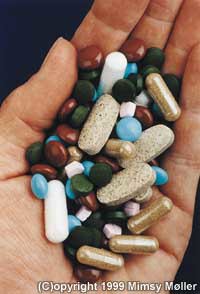 3 LegislationPenal provisions regarding dopingNorway has a penal provision on doping in section 162 b of the Criminal Code. This provision is directed against
Until section 162 b was added to the Criminal Code on 19 June 1992, Norwegian legislation contained no rules expressly addressed to doping. The aim of the provision was to be in a position to strike more effectively at the apparatus which procures and markets prohibited substances by laying down severer penalties than were available under the previous legislation. A further aim was to strike at involvement with such substances, which was not previously encompassed by any penalty. The acquisition, use and possession of prohibited substances were not made a criminal offence. Prohibited substances are set out in a special list, the "doping list", forming part of regulations made by Royal Decree of 30 April 1993. Problems with the current criminal legislationSeveral authorities have raised the question of whether section 162 b should be extended to cover the acquisition, possession and use of doping agents. Some say this provision is difficult to enforce as it now stands. The boundary between lawful possession and criminal storing is not clear and creates a number of practical problems. The fact that conveyance is a criminal offence, while acquisition is not, also creates problems for enforcement of the doping provision. The Contact Committee recommends that section 162 b of the Criminal Code be extended to cover acquisition and possession of prohibited substances. Statutory prohibition of doping?Substances regarded as doping agents are listed in regulations made pursuant to the Criminal Code, section 162 b. The Contact Committee has considered introducing a statutory ban on the use of substances included in a special list in the regulations, the "doping list". If a statutory ban is to be introduced, the Ministry of Justice points out that analysis methods must be available which provide sufficiently reliable results. Norwegian legislation authorises, under given conditions, body searches, including the taking of blood samples. A pertinent example of such legislation is the Road Traffic Act, section 22 a, which authorises the police to take a blood sample to detect the concentration of alcohol in the blood. Moreover, under section 157 of the Criminal Code the prosecuting authority is authorised in particular cases to order a blood sample to be taken in connection with drug violations. Such a blood sample can also be expected to give satisfactory legal safeguards when it comes to detecting doping agents. In the case of prohibited substances best detected by means of a urine sample, including anabolic steroids, legal safeguards are a debatable issue. The test procedures and methods of analysis developed by organised sport (NIF), including collection of urine samples, have been deemed by the NIF's judicial committees, appeal committee and court of arbitration to provide satisfactory legal safeguards. Organised sports' (NIF's) procedures for doping control and analysis should also be considered for use by the police and prosecuting authority. Public authorities are already in the process of introducing collection of urine samples to detect unlawful use of certain types of doping agents. For example, the Ministry of Justice aims to amend the Prison Act to enable urine samples to be taken with a view to detecting misuse of hormone preparations. The Contact Committee is of the view that the introduction of a statutory ban on doping should be considered in Norway. In light of the main intention behind the Act, i.e. to prevent young people from exposing themselves to health risk in the form of side effects of using prohibited substances, any acts which facilitate that young people with impunity use such substances, should be made criminal offences. The Confederation of Sport's statutesThrough membership of the Confederation of Sports (NIF) the individual member accepts NIF's rules in effect at any time. The NIF's statutes contain penalties directed at certain activities, among them doping. Violation of the doping provisions of NIF's statutes, chapter 12, presupposes that the athlete has unlawfully used substances or methods included in the "doping list"( 2 ) adopted by the NIF's Executive Committee and the IOC. The NIF's statutes state unambiguously what penalties may be imposed on an athlete. Available penalties are reprimand, fine, loss of right to hold office, loss of right to participate in competitions and organised training (disqualification), loss of membership (exclusion), reactions in connection with concrete events, as well as loss of marks of honour, etc. Violations of the doping provisions of NIF's statutes, chapter 12, are normally punished by two years' forfeit of the right to hold or retain an office to which the person concerned has been elected or appointed, and to participate in competitions and organised training. A second violation is normally punished by lifetime exclusion. International agreementsNorway considers it highly important to work for an effective anti-doping system within each country. This requires international involvement and co-ordination. In Norway there is a close co-operation between the NIF and the authorities. This is vital with a view to getting the message across internationally. In 1989 Norway acceded to the Council of Europe's Anti-Doping Convention. The Convention has in the main directed attention to doping in organised sport. Norway's implementation of the Convention has been evaluated by the Council of Europe. The Council concluded that Norway's anti-doping effort is a model for countries with a similar tradition and structure and can serve as a source of inspiration for other countries. However, the Council of Europe has also started to focus on doping outside organised sport, and is currently considering whether the Convention should be extended to the non-sporting world. In 1992 the then Minister for cultural affairs signed an agreement with government colleagues in Australia, Canada and the United Kingdom on close co-operation in the field. The agreement now also embraces New Zealand, Sweden and the Netherlands. It is known as the International Anti-Doping Arrangement (IADA). The Council of Europe and the IADA are important fora for shaping strategies for harmonisation in the anti-doping sphere. A quality assurance system (IADA Quality Concept) has been developed under IADA auspices. Its purpose is to consolidate the routines for doping control in affiliated countries through an international control and standardisation system (ISO 9002). In 1993 the Nordic Council recommended the Nordic Council of Ministers to contribute to a Nordic effort against hormone misuse through uniform legislation, information, training and international efforts. The initiative was in part prompted by misuse of anabolic steroids outside organised sport. In 1984 the NIF and the other Nordic countries' sports confederations signed an agreement regarding collaboration on anti-doping measures. The Nordic agreement ensures reciprocal information and bilateral exchange of research findings and ideas for taking the work forward. The agreement also covers reciprocal rights to test other countries' athletes present in a host country. Since 1996 the NIF has also operated a co-operation agreement with China's Olympic Committee on anti-doping. 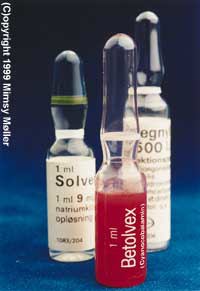 4 Production and distribution systemSupply to the doping marketLittle factual knowledge is available on doping agents manufactured and marketed on the illegal market in Norway. Assessments of the supply to the doping market must therefore build on assumptions and analyses based on seizures by the police and the customs service, and on the information provided by various players about trends and tendencies in the doping market at any time. It is difficult on this basis, however, to comment on the overall size of the market. In 1998 the police and customs authorities seized 69,293 units of illicit drugs distributed on 443 seizures (Directorate of Customs and Excise 1998). SmugglingAn average of 80% of those revealed to be smugglers of doping agents into Norway are men in the age range 20-30 years. The average age of persons apprehended in connection with seizures of doping agents is 27.2 years (1997). In 95% of such cases Norwegian citizens are the culprits. Most seizures by the Customs Service are in postal consignments from Spain, the United States, Thailand and Turkey. Postal consignments account for 49% of the total number of doping seizures. The Police and the Customs Services in the Nordic countries (PTN) have joined forces in a project to look into similarities in the procedures used to smuggle doping agents into these countries. The project is headed by Norwegian customs authorities at the Enforcement Department of the Directorate of Customs and Excise. Sales via the InternetSince the bulk of doping agents sold in Norway are assumed to be imported from abroad (by post or by travellers taking them into the country), it follows that the increasing simplicity and accessibility of systems for ordering doping agents via the Internet has major repercussions. The information network is highly effective in its uncritical marketing of the illicit use of doping agents. The authorities face an enormous challenge in terms of detecting and preventing illegal marketing, illegal importing and illegal sale of drugs via the Internet. In recent years the Norwegian Board of Health has referred a number of "Internet cases" to the police, and asked them to assess the lawfulness of selling pharmaceuticals (including doping agents) via the Internet. 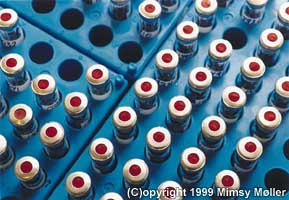 5 Preventative and attitude-shaping work among children and young peopleMinistry of Children and Family AffairsThe Ministry of Children and Family Affairs considers it important to ensure that children and young people can grow up in good, secure conditions. Efforts to combat violence, crime and drugs are at centre-stage in this work, as is the promotion of secure and positive youth milieus able to function as a counterweight to circles where doping is "in". A pertinent example is the "Development programme for strengthening the childhood and adolescent environment" ( Utviklingsprogram for styrking av oppvekstmiljøet), prepared by a number of collaborating ministries. This work is being monitored by the state secretary committee for issues related to children and young people. Ministry of DefenceThe Ministry of Defence attaches importance to the creation of well-being, security, a sense of belonging and trust within and between personnel groups in the National Defence. As from May 1994 the departments of the National Defence were instructed to include preventative information on doping agents in sports officers' training. Ministry of JusticeA main objective of the Ministry of Justice's strategy plan for crime prevention in the period 1998-2001 is to prevent recruitment of criminals, i.e. also in relation to criminal doping offences. Ministry of Education, Research and Church AffairsThe school system's primary task in relation to the anti-doping effort will be to transmit knowledge and to conduct various types of preventative activity. Schools must engage, activate and motivate pupils to take the doping problem seriously. To this end it is imperative to adopt a cross-disciplinary approach and not to confine the theme to physical education and sports subjects. Ministry of Cultural AffairsIn order to secure a stable basic financial framework for the anti-doping effort the Ministry of Cultural Affairs has since 1992 earmarked funds to this end. However, the responsibility for implementing concrete measures vis-à-vis organised sport rests with the NIF. For 1999 the funds allocated to the NIF's ethics and doping work over the Ministry of Cultural Affairs' budget amount to NOK 8.3 million. The NIF's expenditure on anti-doping work is distributed on doping controls (ca. 71%), attitude-moulding activity (ca. 14%), research and development (ca. 8%) and international co-operation (ca. 4%). In 1999 the Hormone Laboratory at Aker University Hospital received about NOK 2.6 million from the Ministry of Cultural Affairs to fund samples analysis, research and development, costs of IOC accreditation and medical-technical equipment. Preventative work by the NIFIn 1998 more than 2,500 doping controls were carried out on athletes training and competing in Norway. Doping controls can be carried out on all persons who are registered members of NIF. In addition NIF operates doping control agreements with private fitness centres. Research contributes by providing information on doping-agent users and their milieus. Attitude-moulding and preventative work vis-à-vis children and young people has been carried on since 1989. It has been important to reach out to coaches, managers, medical personnel and the athlete's support apparatus, in addition to the athletes themselves, since they wield the greatest influence on the athlete. 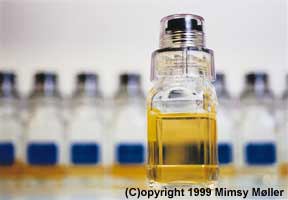 6 Research needs in the areaLike other "underground" phenomena, doping is difficult to study. Hence it is no surprise that the action plan draws attention to a number of areas where our current knowledge is inadequate. Deeper knowledge is needed, both with a view to giving a more complete description of doping as a social problem and with a view to public relations and appropriate preventative measures. Central areas for research and development:
|
